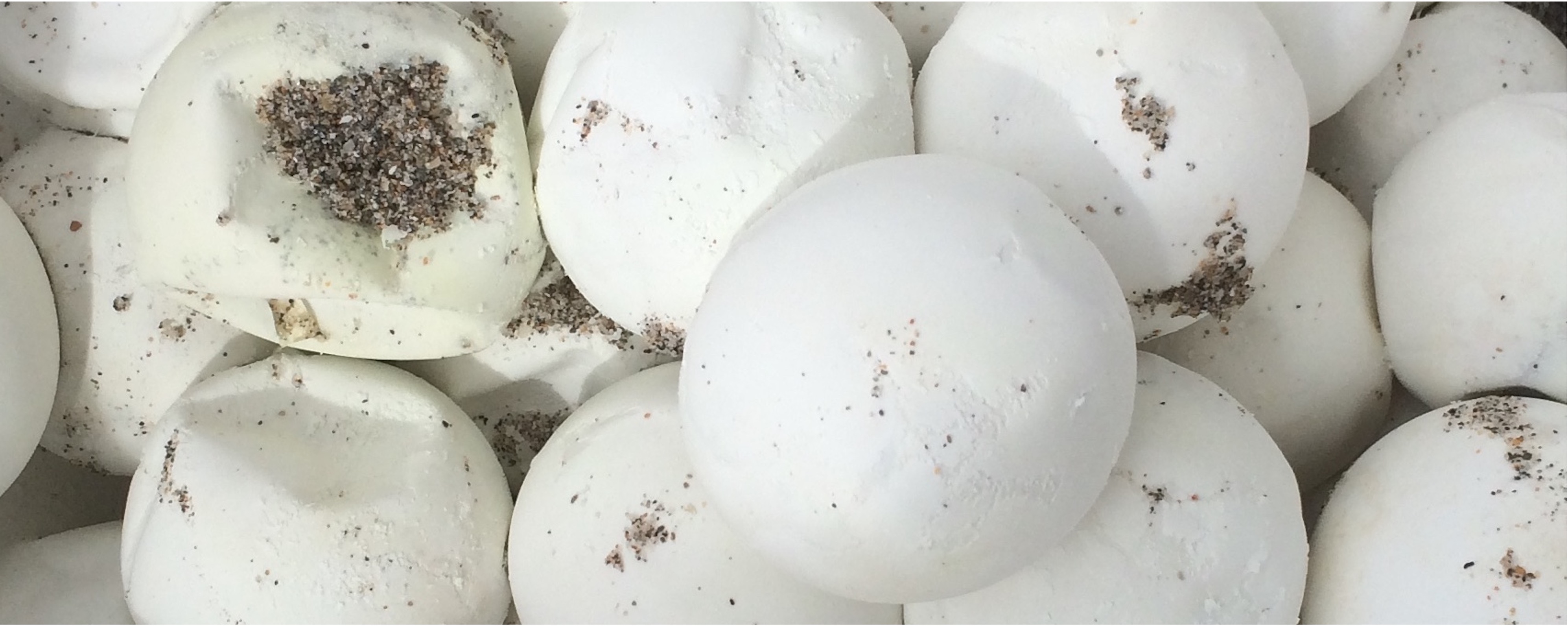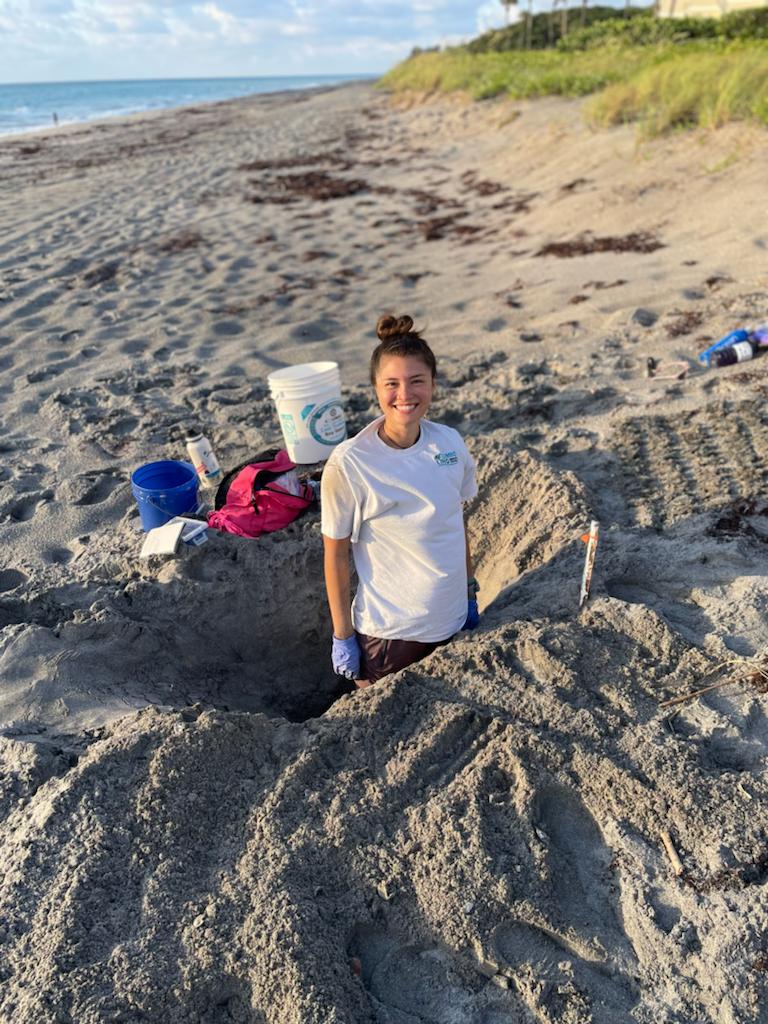
Author: Miguel Serrato
Date:
April 25, 2023
Every year, after the last of the season’s turtles are released, the FAU Marine Lab uses that “offseason” time to analyze results and do lab repairs. In this article, we highlight the hard work some of our graduate students have accomplished over the last year.

Cracking the code for leatherback nest success
Did you know leatherback sea turtles have the lowest hatching success of any species? Leatherback eggs hatch about two months after they are laid in their nest. On average, only about 50% of eggs in the nest hatch. Emily Turla, a Ph.D. student and the lab coordinator at the FAU Marine Lab, is studying when and why leatherback eggs fail to hatch.
After excavating and studying over 1400 unhatched leatherback eggs, Turla documented that 55% of these eggs showed no sign of development. This means those eggs were either infertile or the embryos died very early in development (within the first week or two in the nest). While Turla has not yet concluded this research, so far her findings indicate that eggs laid later in the nesting season tended to have more late-stage embryo death (embryos which are close to being fully formed) compared to eggs laid in the early and middle parts of the season. Additionally, she found that last year (2022) had more late-stage embryo deaths than 2021. Her hypothesis is that late-stage embryos, may be more vulnerable to less than optimal incubation temperatures depending on the time of year they are laid.
Surprising strength of sea turtle shells
Ask anyone to describe a turtle shell, even a marine biologist, and they will undoubtedly tell you that a turtle’s shell is sort of like a shield; it is a hard and stiff structure that offers protection. Ivana Lezcano is a Ph.D. student studying turtle shells and she is discovering that shells may be more flexible than most people thought.
Take your hand and run your fingers across your ribs. Now, imagine that each of those ribs has broadened and flattened to connect to each other and create a shield of bone running the length of your back and sides. That’s how turtle shells are made; they develop as wide flat rib bones (renamed pleural bones)!
Look at the picture below. It’s a cross-section of a piece of a hawksbill sea turtle shell bone. Were you expecting to see so much empty space? Lezcano is finding a lot of spongy bone makes up the shell! Spongier, more porous shell bone will be more flexible. This uniquely allows the shell to not only be a stiff shield, but flexible too! Species likely differ in how stiff and flexible their shells are because of differences in these small-scale structures driven by their unique lifestyles (for example, shallow vs. deep divers deal with lesser vs. greater pressure). Predators likely affected these shell traits as well. The discovery that sea turtle shells are both stiff and flexible is a testament to the remarkable adaptability of these ancient animals.

Look out for next month’s newsletter where we will wrap up our turtle trilogy highlighting a few more graduate research projects from 2022!
